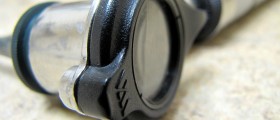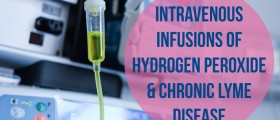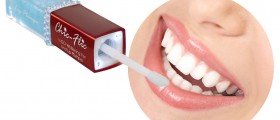Hydrogen Peroxide and Its Uses
Hydrogen peroxide is a liquid, which is pale blue in color. This liquid has strong oxidizing and bleaching features. The chemical formula for hydrogen peroxide is H2O2. Hydrogen peroxide is a highly reactive chemical and therefore, it has many applications in the medical, as well as industrial sector.
In medicine, it is mostly used in disinfection of the wounds. On the other side, in the industry, it is used as a bleaching agent, especially when pulp and paper bleaching is in question. Since hydrogen peroxide has antibacterial properties, it is widely used as an antiseptic and disinfectant. Therefore, many infections can be successfully cured by it. Many people use hydrogen peroxide when they suffer from an ear infection since it can effectively heal it.

Ear Infection
The human ear can be divided into three parts: the outer ear, the middle ear, and the inner ear. Each of these three parts has its own structure. The outer or external ear is made of the ear flap and ear canal where the ear glands that secrete the ear wax are.
The middle ear is comprised of an eardrum, hammer, anvil, and stirrup. The inner ear is made of the cochlea, semicircular canals, and an auditory nerve.
Otitis externa is the medical term for an external ear infection. When the ear infection occurs in the middle ear, it is medically called otitis media, while otitis interna is the medical term for ear infection in the inner ear. Otitis media is the most frequent ear infection.
In the majority of cases, people develop ear infections due to a cold, since it can lead to the swelling of the Eustachian tube that links the middle ear to the pharynx. When this small tube is swollen, it becomes easily blocked, thus making a good environment for bacteria and germs, which is why an ear infection occurs. Impacted ear wax may also be responsible for the occurrence of an ear infection.
Hydrogen Peroxide for Ear Infection
Only 3% hydrogen peroxide is used for medical purposes. Hydrogen peroxide is effective in removing tissue debris even from unreachable areas since it causes an effervescence reaction. Hydrogen peroxide is used to treat external ear infections and to remove foreign bodies that are trapped in the ear.
Furthermore, hydrogen peroxide can soften the ear wax and thus facilitate its removal from the ear. Only a few drops of 3% hydrogen peroxide should be poured into the infected ear. After a few seconds, it should be drained completely from the ear.
- Sand rats underwent a right-side total labyrinthectomy, and a polyethylene tube was inserted into the left-side middle ear. Following baseline recordings of vestibular evoked potentials in response to linear acceleration stimuli and auditory brainstem response, each experimental animal received five daily applications of hydrogen peroxide into the left-side middle ear.
- Two control groups received saline and gentamicin, respectively. Subsequently, recordings were repeated and compared with baseline measurements.
- Saline administration affected neither vestibular evoked potentials nor auditory brainstem response. In contrast, both responses could not be recorded following gentamicin application.
- After hydrogen peroxide administration, auditory brainstem response could not be recorded in 25% (3 of 12) of the animals, whereas in the remaining nine animals the average auditory brainstem response threshold was significantly elevated by 55 dB (P =.000002).
- Linear vestibular evoked potentials could not be recorded in 42% (5 of 12) of the animals.

















Your thoughts on this
Loading...